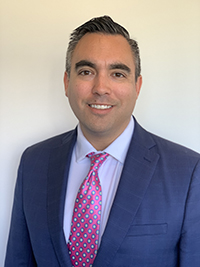How do you help healthcare organizations?
We are an employer-sponsored benefit that acts as the payer for an employee’s out-of-pocket healthcare expenses. By positioning ourselves at the intersection of three major stakeholders — patients, providers and employers — Paytient is addressing some of healthcare’s enduring pain points. For employees, we eliminate the financial harm of paying for out-of-pocket costs by offering interest-free payment arrangements without any fees or hidden charges. For health systems, we reduce financial risk by improving collections on self-pay receivables and increasing domestic spend. For employers, we create additional flexibility around less costly health plan designs, which can help lessen premiums and enable employees to live healthier and more productive lives.
What are some of the biggest challenges you see affecting healthcare organizations?

From our vantage point, healthcare is moving to a more defined contribution model, like the shift that occurred in the retirement savings market years ago, where companies moved away from defined benefit plans and instead began offering 401ks. A defined contribution model in healthcare would mean that patients would likely become the primary payers of sub-catastrophic care, and in the future, a larger portion of care will be financed rather than insured. Hospitals and health systems are already experiencing the early growing pains associated with this shift, as evidenced by the rapidly rising amount of self-pay receivable dollars appearing on their balance sheets. The problem is that people and providers aren’t prepared for the patient to become the primary payer. Providers are negatively impacted when patients opt not to pay their full bill, and patients experience financial hardship when they resort to toxic funding sources, such as taking on medical debt, being forced to carry balances on credit cards or having to engage in awkward conversations with providers about payment plans.
The situation is especially challenging for healthcare organizations that are dealing with rising bad debt and managing the out-of-pocket expenses for their own employees. Many hospitals and health systems have designed their health plans to care for their own employees. When employees don’t fully meet their out-of-pocket responsibilities, the health system is put in the awkward position of trying to collect that money. Interestingly, self-pay collection rates for hospital employees tend to be even lower than the already concerning rates that exist for other insured patients. Not only is this financially difficult for healthcare organizations, it also presents another difficult balancing act someone must manage. In our discussions with several health system executives, this challenge typically equates to a bad debt opportunity of about $1 million per 1,000 benefits-eligible employees.
How does your service offering address these needs?

When employees enroll in the Paytient program, they are given a payment card, which they use to pay their out-of-pocket costs in full at the point-of-service, over the phone or online. Employees then select a funding source for the payment that best fits their needs, whether that’s a payroll-deducted payment plan, bank withdrawal or deduction from a health services account (HSA) or flexible spending account (FSA) — or some combination of these. Employers may also choose to load funds onto the card for employees to use, perhaps matching the amount of each individual’s deductible. Employees can tap into this money first and then turn the remaining balance into a payment plan, HSA or FSA deduction or other option.
Once an employee chooses a funding source(s), Paytient manages the selected repayment option, removing the burden of chasing down payments from the healthcare provider while giving employees a financially friendly way of meeting their responsibilities.
Since Paytient works like an ordinary VISA card, it is easy to use. From the employee perspective, this familiarity and convenience drives adoption. Our experience shows that approximately 10% of employees begin using the Paytient card within the first month and around 45% are using it by the end of a year.
The platform is also straightforward from a revenue cycle management standpoint. Nothing changes in the revenue cycle for providers, and there are no complex add-ons or reporting requirements.
Paytient is not limited to hospital use. It has an open network, meaning employees can use the card for any healthcare expenses in any location throughout the United States where VISA is accepted, including primary and specialty care, dentistry, pharmaceuticals and vision care.
For healthcare organizations, this platform can help reduce the cost of bad debt. By offering Paytient to their own employees, hospitals and health systems can start the journey with one of their largest and most important patient populations. Decreasing bad debt while improving employees’ access to care is a win for everybody involved.
What are some key considerations for healthcare leaders when choosing this type of service?
We are passionate about our mission to remove cost as a barrier to care while “doing no financial harm.” Our product does not have any employee-paid interest or fees, and there are no access or withdrawal charges. In addition, our revolving credit line and flexible payment terms allow individuals to meet their financial responsibilities without causing long-term financial hardship. From what we see, patients typically want to pay for services they have received. We give them a way to do that and to set their own transaction terms.
What advice would you offer to healthcare leaders when choosing among vendors?
We think the best partnerships share common principles and values. We make sure there is cultural alignment, as this represents the bedrock of a working partnership, before we discuss the features and financial benefits of our platform. Paytient was founded by a former hospital administrator, and our measure of success is the number of people we’ve enabled to access healthcare in a timely manner. When employees use Paytient to pay for care, they’re trusting us to help them in an urgent, personal moment, and we appreciate that our ability to create a positive impact in people’s lives is a privileged position grounded in trust.
How can healthcare organizations learn more about your company?
To learn more about Paytient, go to www.paytient.co or reach out with questions or comments to [email protected]. You can also hear us speak at the HFMA Leadership Training Conference in Austin, Texas on April 26-28 and at the HFMA Annual Conference in San Antonio in June.
In this Business Profile, Paytient’s founder and CEO Brian Whorley and Chief Commercial Officer Darius Chehzrad discuss how streamlining the payment of out-of-pocket costs can help patients, providers and employers.
About Paytient
Paytient is an employer sponsored payer that enables employees to manage out-of-pocket medical expenses through interest-free, payroll deducted payment plans. Our mission is to eliminate preventable financial harm for patients, providers, and employers while enabling people to better access and afford earlier care.






